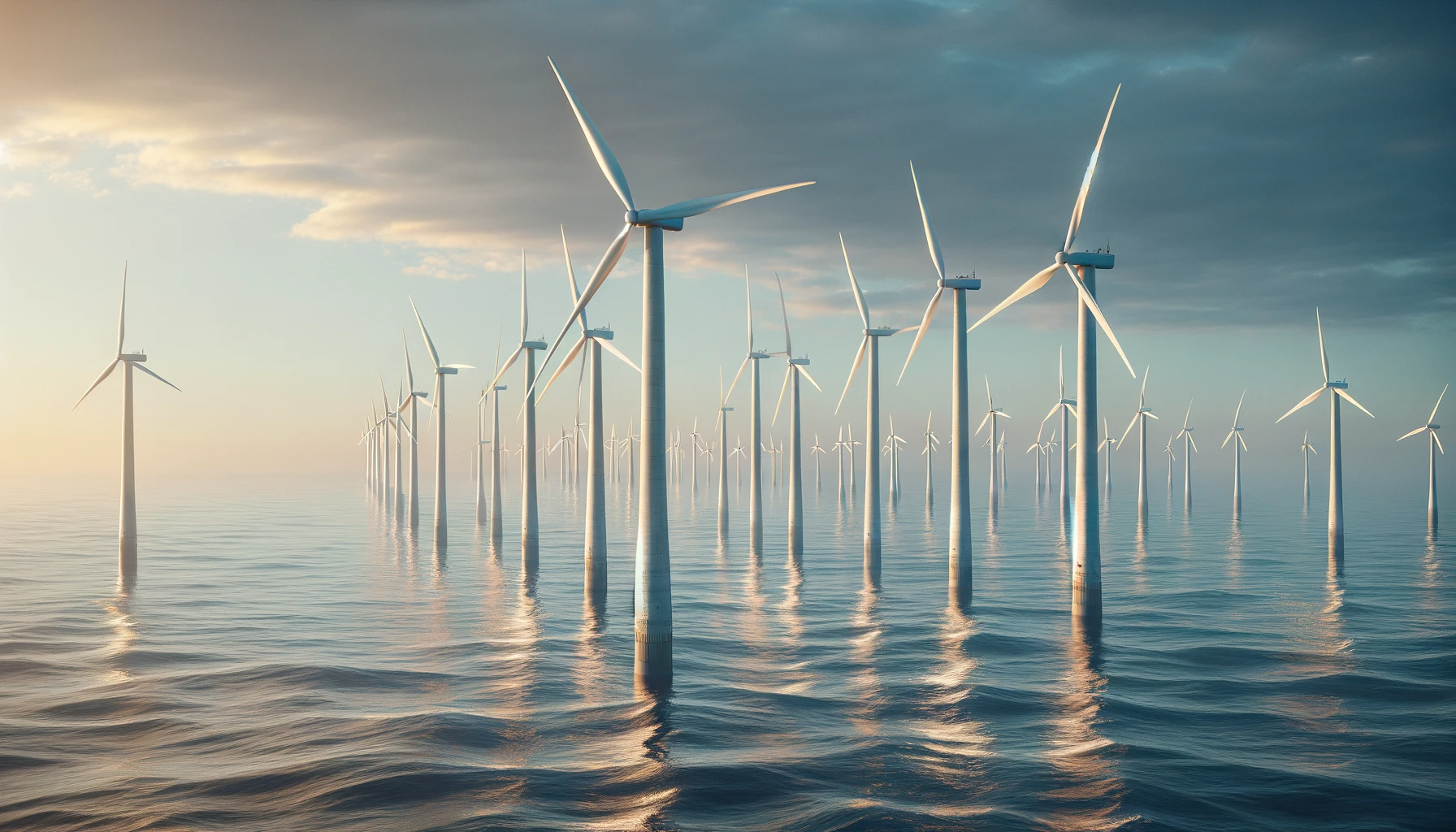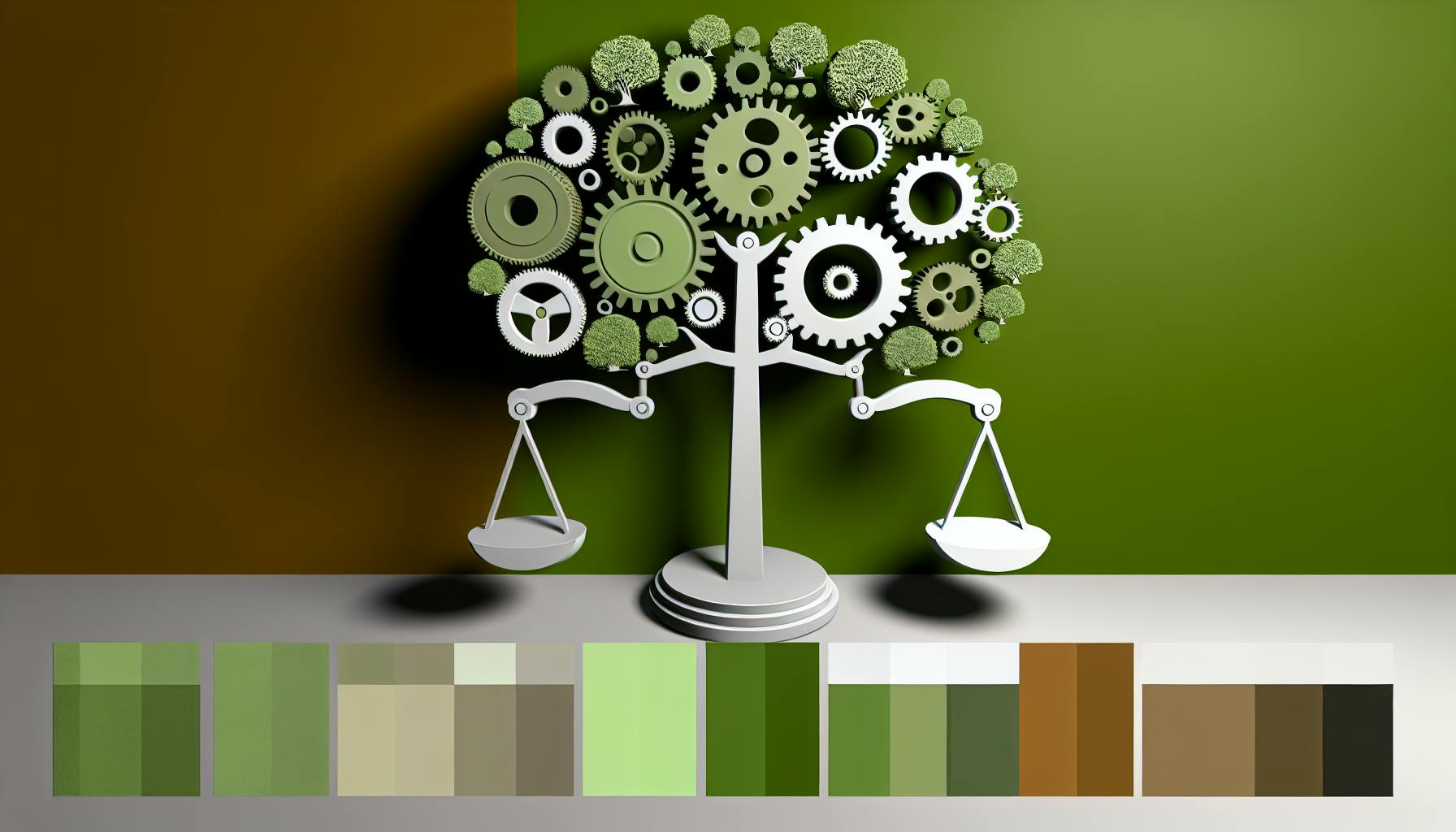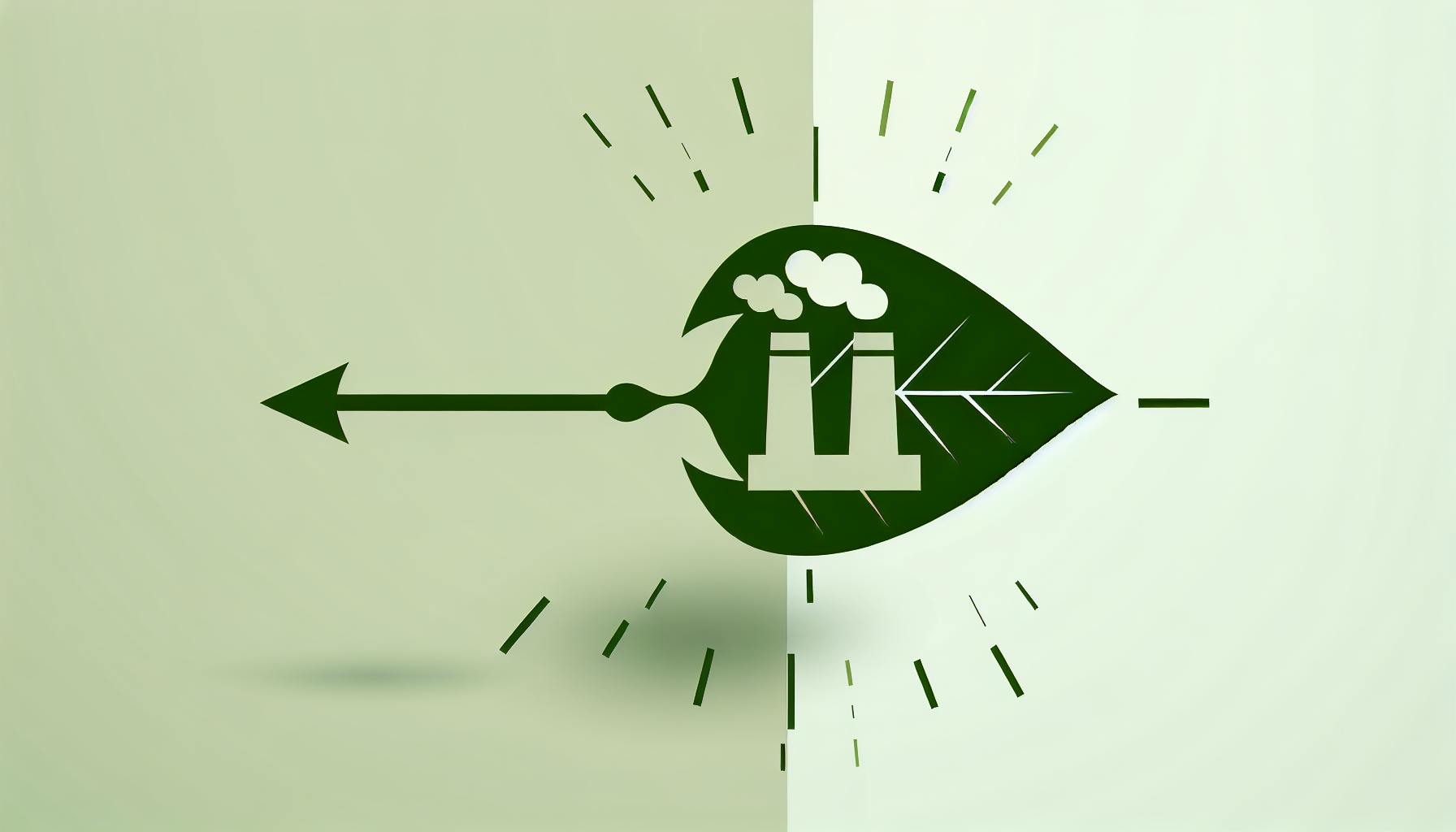We can all agree that reducing our environmental impact is crucial, yet figuring out how to do so in business can be challenging.
The good news is that SaaS companies have a major opportunity to minimize their carbon footprint through a strategic product lifetime cycle approach.
In this post, we'll walk through practical methods to embed sustainability across the product journey - from ideation to end-of-life. You'll discover how to design circular products, optimize manufacturing, manage eco-conscious launches, and more.
Embracing the Product Lifetime Cycle to Minimize Carbon Footprint in SaaS
The key to reducing carbon emissions for SaaS companies lies in strategic management of the product lifetime cycle. By optimizing R&D, manufacturing, distribution, usage, and end-of-life phases, SaaS providers can align business priorities with sustainability.
Overview of Product Lifetime Cycle Strategy in SaaS
The product lifetime cycle outlines the journey of a product from conception to retirement. There are five main stages:
- Introduction - New product is launched to the market
- Growth - Product gains mainstream adoption
- Maturity - Product reaches peak sales potential
- Decline - Demand for the product begins to reduce
- Retirement - The product is discontinued
At each phase of the cycle, SaaS companies have opportunities to implement sustainability best practices that minimize environmental impact.
For example, during the R&D and introduction stages, providers can design energy-efficient software architecture and optimize code to reduce energy consumption. Distribution can leverage green shipping options while decline and retirement allows for responsible e-waste recycling programs.
The Intersection of Product Lifetime Cycles and Climate Goals
As the effects of climate change intensify, the technology sector is under increasing scrutiny to limit emissions and mitigate environmental damage.
Regulators and stakeholders now expect SaaS companies to publicly report on sustainability initiatives tied to concrete climate action targets. This includes transparency around product lifetime cycle management.
By taking a lifecycle view, providers gain better visibility into carbon hotspots across their value chain. Resources can then be allocated to high-impact areas delivering the greatest emission reductions.
Ultimately, integrating sound sustainability practices into product lifetime cycle management enables SaaS companies to cost-effectively decarbonize operations while meeting pressing climate goals.
What is in a product life cycle?
The product life cycle outlines the typical journey a product goes through from initial launch to final retirement. Understanding these stages can help SaaS companies plan business and marketing strategies to maximize success.
There are four main phases:
Introduction Stage
This initial phase focuses on building product awareness and attracting early adopters. Companies invest heavily in marketing but see limited sales. At this stage, the priority is understanding customer needs to refine the product offering.
Growth Stage
With more market acceptance, sales volume rapidly increases. Companies focus on improving functionality, building partnerships, and expanding their customer base. More investment goes towards marketing and sales to fuel further growth.
Maturity Stage
The product hits mainstream popularity and sales growth starts to slow. Companies aim to maximize market share through competitive pricing, quality improvements, and targeted promotions. Marketing becomes more defensive to retain loyal customers.
Decline Stage
As alternative products become available, sales decline. Companies reduce spending on marketing and product development. Existing customers are supported but few new ones are acquired. Eventually the product is discontinued or sold off.
SaaS companies should align their sustainability efforts with the product life cycle. As an example, during growth the priority could be onboarding new customers to the product's eco-friendly features. Then in maturity, engage customers in sustainability initiatives to improve brand loyalty.
What are the 5 stages of the product life cycle?
The 5 main stages of a product's life cycle are:
-
Development - This initial stage focuses on researching, designing, and building the product. Resources are invested into R&D, prototyping, and testing.
-
Introduction - The product is brought to market and commercialized. Sales and marketing efforts focus on establishing awareness and trial of the new offering. Growth is slow as the market gets educated.
-
Growth - With increased market acceptance, sales grow at an accelerated pace. Focus shifts to expanding production capacity and distribution reach to match rising demand.
-
Maturity - Sales growth starts slowing as the market reaches saturation. At this stable stage, companies aim to maximize profits while defending against competition.
-
Decline - Sales decline as the product is replaced or consumer needs shift. The firm has 3 options - revitalize the product, keep market share with minimal investment, or phase it out.
Understanding where a product lies on this curve can inform key business decisions around investment, pricing, features, and more. Tracking movement between stages also helps gauge market health.
What is product life cycle in marketing?
The product life cycle refers to the stages a product goes through from development to being discontinued. Understanding this cycle can help businesses make strategic decisions to maximize sales and profitability.
There are four key stages in the product life cycle:
Introduction Stage
This is when a product is first launched. Sales will be low as customers learn about the new offering. Businesses focus on building awareness through marketing and managing costs during this stage.
Growth Stage
Sales increase rapidly as more customers adopt the product. Profits begin to rise as costs can be spread across higher production volumes. Businesses focus on increasing market share during this fast growth phase.
Maturity Stage
Sales growth begins to slow as most potential customers now have the product. Profit levels peak and start to decline towards break-even. Businesses aim to extend this mature stage through incremental innovations and entering new markets.
Decline Stage
Sales and profits start to decline significantly. Most businesses focus on reducing costs till it becomes unviable and the product is discontinued. New product introductions shift attention away.
Understanding the distinct challenges and strategies for each stage allows companies to maximize opportunities and mitigate risks over the product lifetime. Aligning business plans with the current life cycle position can improve success.
What are the 7 steps of product life cycle?
Reducing emissions throughout a software product's lifetime is key for SaaS companies pursuing climate action goals. Here is an overview of strategies to consider during each phase:
Ideation
- Prioritize energy efficiency and carbon reduction in initial product requirements and design. Set sustainability criteria.
Validation
- Estimate emissions from proposed features. Model projected footprint over product lifetime.
Prototyping
- Choose green providers for dev infrastructure. Favor renewable energy sources.
Marketing
- Communicate sustainability merits to potential users. Highlight emission reduction capabilities.
Development
- Optimize code to minimize computing resources required. Use energy-efficient languages.
Launch
- Offer robust analytics into product's carbon footprint over time.
Improvement
- Continuously refine to increase efficiency. Retire unneeded features reducing emissions.
Taking a lifecycle view enables balancing user needs with sustainability. Building emission considerations into all stages drives climate action.
Stage 1: Ideation and Research - Embedding Sustainability from the Start
The critical role of integrating environmental considerations in the initial stages of product development.
Understanding the Product Life Cycle Stages with Examples
As a SaaS company, it's important to consider sustainability from the very first stages of product development. Here are the key phases of the product life cycle, and how sustainability can be integrated at each one:
Ideation & Research
- Brainstorm product ideas that solve customer needs while minimizing environmental impact.
- Conduct market research on user demand for eco-friendly products.
- Competitor analysis on sustainability best practices.
Development & Testing
- Choose eco-conscious technologies, materials, and procedures.
- Perform life cycle assessments to calculate product's carbon footprint.
- Test for energy efficiency and other green criteria.
Real-world examples:
- Zoom optimized data centers for renewable energy during development.
- Google uses life cycle analysis to create energy-efficient data centers and offset emissions.
Developing a Product Lifetime Cycle Plan
Outlining how to approach sustainability planning during the initial stages of product development:
Key Elements:
- Set goals to reduce emissions during ideation, development, usage, and end-of-life product stages.
- Calculate projected product lifetime footprint and form emission reduction targets.
- Choose sustainable technologies and materials with low carbon impact.
- Plan for energy efficiency optimizations like using renewable energy to power data centers.
- Design products to enable reuse, refurbishment, and recycling at end of lifespan.
Execution:
- Assign team members responsible for sustainability considerations.
- Integrate environmental criteria into design and testing processes.
- Continuously re-evaluate lifetime plan as product evolves to meet reduction goals.
With mindful planning from the start, SaaS companies can build quality digital products that align with their net zero emissions ambitions. Evaluating environmental impacts at all stages allows for a comprehensive and effective sustainability strategy.
sbb-itb-919600f
Stage 2: Design - Fostering Sustainable and Circular Products
Sustainable product design plays a pivotal role in reducing the carbon footprint of software products over their lifetime. By taking a circular economy approach and planning for longevity from the outset, SaaS companies can minimize waste and enable reuse and recycling.
Incorporating Sustainability into Product Design
When designing sustainable software products, consider:
- Modularity - Create components that can be easily updated, rather than replaced entirely. This supports maintenance and upgrading.
- Energy efficiency - Optimize performance to reduce energy consumption. Set devices and servers to sleep when idle.
- Durability - Build robust products that withstand long-term use. Select durable materials.
- Repairability - Enable easy disassembly for maintenance and repairs. Use standard components.
- Reusability - Accommodate second-hand sales and trade-ins.
Implementing these strategies fosters product longevity over disposal, aligning with net-zero emissions goals.
Planning for Product Upgrades and Maintenance
To extend a product's useful life:
- Design with future-proofing in mind by using adaptable components and connections.
- Provide spare parts and repair manuals to enable maintenance.
- Offer modular upgrades to add new features without full replacement.
- Enable software updates to fix bugs and enhance security.
- Provide support resources like self-help and community forums.
Proactively planning for later life cycle stages helps sustainably maximize value creation over time while meeting the changing needs of users.
Stage 3: Manufacturing - Streamlining for Efficiency and Sustainability
Reducing emissions from manufacturing processes can significantly lower a product's carbon footprint over its lifetime. By evaluating suppliers and implementing low-carbon production methods, SaaS companies can align operations with sustainability goals.
Evaluating the Supply Chain's Environmental Impact
- Conduct lifecycle assessments to identify high-impact materials and processes
- Compare supplier sustainability reports to choose partners with lower footprints
- Prioritize local sourcing to reduce transportation emissions
- Require suppliers to set science-based emission reduction targets
Streamlining the supply chain allows focusing efforts on partners committed to climate action.
Implementing Low-Carbon Manufacturing Processes
- Switch to renewable energy sources like solar, wind, or hydropower
- Improve energy efficiency through equipment upgrades and smart building controls
- Reduce material waste via lean manufacturing techniques
- Reuse byproducts or recycle materials back into production
Operational changes that lower energy and resource usage directly decrease carbon emissions. Small tweaks can add up to outsized impact over a product's lifetime.
Taking a data-driven approach makes cutting manufacturing emissions an achievable goal on the path towards net zero.
Stage 4: Market Introduction - Managing a Sustainable Launch
As SaaS companies prepare to launch their product, it is crucial they consider the environmental impact at this stage. By taking a sustainable approach to market introduction, companies can reduce their carbon footprint and demonstrate their commitment to climate action.
Sustainable Marketing Strategies
When bringing a new product to market, SaaS providers should evaluate their marketing methods through a sustainability lens. Some strategies include:
-
Highlight the product's environmental credentials and lifecycle impacts in messaging to attract eco-conscious customers. Provide quantified data on emission reductions.
-
Minimize paper usage in sales collateral and avoid plastic swag items. Digital or recyclable materials are preferred.
-
Consider lower-carbon advertising options like organic social media and influencer campaigns rather than physical billboards.
-
Offer virtual product demonstrations, webinars, and conferences instead of in-person sales events to reduce corporate travel emissions.
-
Incentivize customer referrals over costly acquisition advertising to leverage word-of-mouth at scale.
Monitoring and Improving the Product Post-Launch
Once a sustainable SaaS product hits the market, providers must continually track its impacts and identify areas for improvement:
-
Monitor cloud usage, e-waste output, and other lifecycle emissions using automated software tools. Establish reduction targets.
-
Survey customers on potential enhancements to "green" product features or carbon labeling.
-
As usage and revenues scale, invest savings into renewable energy and carbon removal offsets to maintain net-zero operations.
-
When growth plateaus and revenues decline, consider strategic changes - from improving functionality to sunsetting unsustainable offerings - prior to end-of-life.
Taking proactive, measurable steps to reduce emissions throughout launch and beyond demonstrates a genuine commitment to sustainability claims made in marketing. This builds stakeholder trust in the brand and product as both environmentally and commercially viable over the long term.
Maturity Stage of Product Life Cycle: Maintaining Sustainable Growth
The maturity stage is when a product has achieved widespread market adoption and sales growth starts to slow down. For SaaS companies, this stage offers an opportunity to improve environmental sustainability through customer engagement and product enhancements.
Sustainable Customer Engagement and Retention
-
Send periodic email campaigns highlighting the product's sustainability credentials and achievements. This reminds customers of shared values.
-
Gather customer feedback on potential sustainability improvements for the product. This makes them feel heard and deepens engagement.
-
Offer incentives for customers to use product features that optimize energy and resource efficiency. This encourages greener usage habits.
-
Publish annual sustainability reports for transparency into emission reductions. This builds trust and loyalty with eco-conscious users.
Incorporating User Feedback for Sustainability Enhancements
-
Conduct surveys and interviews to identify the most requested environmental upgrades from customers.
-
Prioritize development resources on features that reduce energy consumption and e-waste.
-
Set clear targets for emission reductions through software optimization and infrastructure efficiency.
-
Provide users visibility into sustainability metrics like carbon footprint per account. This aids their own reporting.
With strategic customer engagement and responding to user environmental priorities, SaaS companies can achieve sustainable growth during the maturity phase.
Decline Stage of Product Life Cycle: Transitioning Responsibly
The decline stage of the product life cycle can be challenging, but also presents opportunities for sustainable transition. As demand decreases, smart SaaS companies plan responsibly to phase out products while minimizing waste and environmental impact.
Strategies for Easing out Products with Minimal Waste
-
Repurpose and extend product lifetime: Offer software updates, find new use cases, or re-sell to secondary markets to prolong viability.
-
Prioritize recycling and safe disposal: Establish e-waste recycling programs and policies to ensure responsible end-of-life product management.
-
Transition to cloud-based models: Migrate products and data storage to the cloud to reduce reliance on hardware and enable responsible scaling.
-
Consolidate product portfolios sustainably: Assess environmental impacts and optimize remaining product lines holistically. Consider entire supply chains.
Planning for a Sustainable Successor
The decline stage offers lessons to inform the development of sustainable successor products:
-
Design for durability, reuse and recycling from the start, using eco-design principles.
-
Seek opportunities for circular economic models to retain value in technical nutrients.
-
Work closely with supply chain partners to enable transparency and cleaner production.
With mindful planning, the decline stage can facilitate continuous improvement in sustainability over ongoing product cycles.
Monitoring and Reporting: The Backbone of a Product Lifetime Cycle Strategy
Regular monitoring and transparent reporting are critical for companies to effectively manage their product's environmental impact over its lifetime. By establishing comprehensive sustainability metrics and communicating progress openly with stakeholders, businesses can strengthen their climate action strategies.
Establishing Comprehensive Metrics for Carbon Footprint Tracking
To track a product's carbon footprint through its lifetime, companies need to identify key emissions sources and define appropriate measurement indicators. Important areas to monitor may include:
- Materials and manufacturing process impacts
- Product transportation and distribution emissions
- Energy consumption during usage
- End-of-life disposal/recycling effects
Metrics could cover GHG emissions, water usage, waste generation and more. Lifecycle analysis helps quantify impacts at each stage. With strong metrics in place, companies can then detect hotspots for intervention.
Transparency and Stakeholder Engagement in Sustainability Reporting
Communicating sustainability performance transparently helps hold companies accountable and engages stakeholders in climate efforts:
- Annual public emissions reports build trust and credibility
- Carbon label schemes on products inform consumer choices
- Investor briefings assist in securing green financing
- Internal newsletters update staff on progress
By openly sharing challenges and achievements around minimizing product lifetime emissions, companies can strengthen commitment to net-zero across their value chain.
Conclusion: Synthesizing the Path to Sustainable SaaS
SaaS companies aiming to reduce their carbon footprint can take strategic action across every stage of the product lifetime cycle. Here is a concise summary of key steps on the path towards sustainability:
-
Introduction Stage: At product inception, conduct an environmental impact assessment and life cycle analysis to understand risks and develop targeted emission reduction plans. Focus on cloud efficiency, renewable energy procurement, and sustainable hardware.
-
Growth Stage: Implement granular emissions tracking tied to business metrics. Set aggressive science-based targets. Engage stakeholders through sustainability reports and real-time dashboards.
-
Maturity Stage: Continuously enhance products, infrastructure, and processes to drive down emissions. Offset any remaining footprint via certified schemes. Prepare to demonstrate net-zero aligned products to customers.
-
Decline Stage: Plan for responsible product end-of-life by enabling low-impact retirement, reuse, recycling, and safe material disposal. Learnings can inform future product generations.
By taking a proactive approach at every stage, SaaS providers can transform into truly sustainable businesses - realizing commercial benefits while supporting global climate action. The product lifetime cycle presents a strategic opportunity to embed environmental stewardship into the core.



.png)


